14 Back-to-School Activities for Listening, Respect, and Transitions
Get free social skills materials
No-prep lessons on self-regulation, emotional recognition, conversation skills, and more.
Sign up hereThe start of the school year is full of excitement and change. New classrooms, new routines, and new relationships mean students need more than academic skills to succeed. They also need clear guidance on how to listen, follow directions, respect others, and move smoothly through daily routines.
For teachers, the first few weeks are the best time to set these expectations. Strong behavior skills create structure, reduce disruptions, and help students feel confident and connected. With the right tools, educators can build a positive classroom culture that lasts all year.
This article brings together practical strategies and free, ready-to-use activities designed to support listening, respect, and transitions. Whether you work with preschoolers, elementary students, or middle schoolers, you will find resources here to introduce routines, reinforce expectations, and make back-to-school a smoother experience for everyone.
Build Stronger Classrooms with Free Behavior Skills Activities
Download ready-to-use lessons that teach listening, respect, and smooth transitions so students are prepared to learn every day.
What Are Behavior Skills in the Classroom?
Behavior skills are the everyday actions and routines that help students succeed at school. They go beyond academics and focus on the social and self-management habits that make classrooms run smoothly. When students know how to listen, follow directions, respect others, and move from one activity to the next, teachers can spend less time managing behavior and more time teaching.
Some common classroom behavior skills include:
- Listening and following directions: paying attention to the teacher and responding appropriately
- Respecting others and managing personal space: showing kindness, cooperation, and awareness of boundaries
- Transitioning between activities: shifting from one task or setting to another without disruptions
- Following classroom routines: lining up, raising hands, and using materials responsibly
Teaching these skills explicitly, especially at the start of the school year, gives students a clear framework for what positive behavior looks like. When expectations are clear and practiced, students are more confident, peers feel respected, and classrooms become calmer, more predictable environments for learning.
Why Teach Behavior Skills at the Start of the Year?
The first weeks of school set the tone for the entire year. Students are learning new routines, adjusting to expectations, and building relationships with teachers and peers. This is the ideal time to introduce and reinforce behavior skills, because habits formed early are the ones that stick.
Focusing on behavior skills at the beginning of the year helps with:
- Creating clear expectations: Students understand exactly what listening, respect, and smooth transitions look like in practice.
- Building a positive classroom culture: Respectful behavior encourages cooperation and helps students feel safe and valued.
- Reducing disruptions: Strong listening and transition routines minimize downtime and keep lessons moving.
- Strengthening independence and self-control: Students gain the skills they need to manage themselves, work with peers, and take responsibility for their actions.
By starting the year with structured activities that target listening, respect, and transitions, teachers give students the foundation they need to thrive academically and socially. Re-teaching these skills throughout the year can also help after breaks or when routines begin to slip.
14 Back-to-School Activities for Listening, Respect, and Transitions
Build Stronger Classrooms with Free Behavior Skills Activities
Download ready-to-use lessons that teach listening, respect, and smooth transitions so students are prepared to learn every day.
The first weeks of school are the perfect time to set expectations and build the routines that carry students through the year. Teachers know that strong behavior skills such as listening to directions, showing respect to peers, and moving smoothly between activities are the foundation of a calm and productive classroom.
To make this easier, we have pulled together 14 free, ready-to-use activities and lesson plans designed for preschool through middle school. These resources cover three key areas:
- Listening and following directions
- Respecting others and building positive relationships
- Classroom routines and smooth transitions
Each activity includes a simple description, instructional tips, and a free downloadable resource you can use right away. Whether you are introducing routines on the first day or reinforcing expectations later in the year, these lessons will help create a consistent and respectful classroom environment.
Keeping Personal Space Lesson Plan
Skill Area: Respecting Others and Personal Space
Grade Band: Pre-Kindergarten & Kindergarten
This personal space lesson teaches preschool and kindergarten students how to respect boundaries using visuals, interactive scenarios, and simple discussion. It helps students practice recognizing and honoring both their own “bubble” and that of others, creating a safe and comfortable classroom atmosphere.
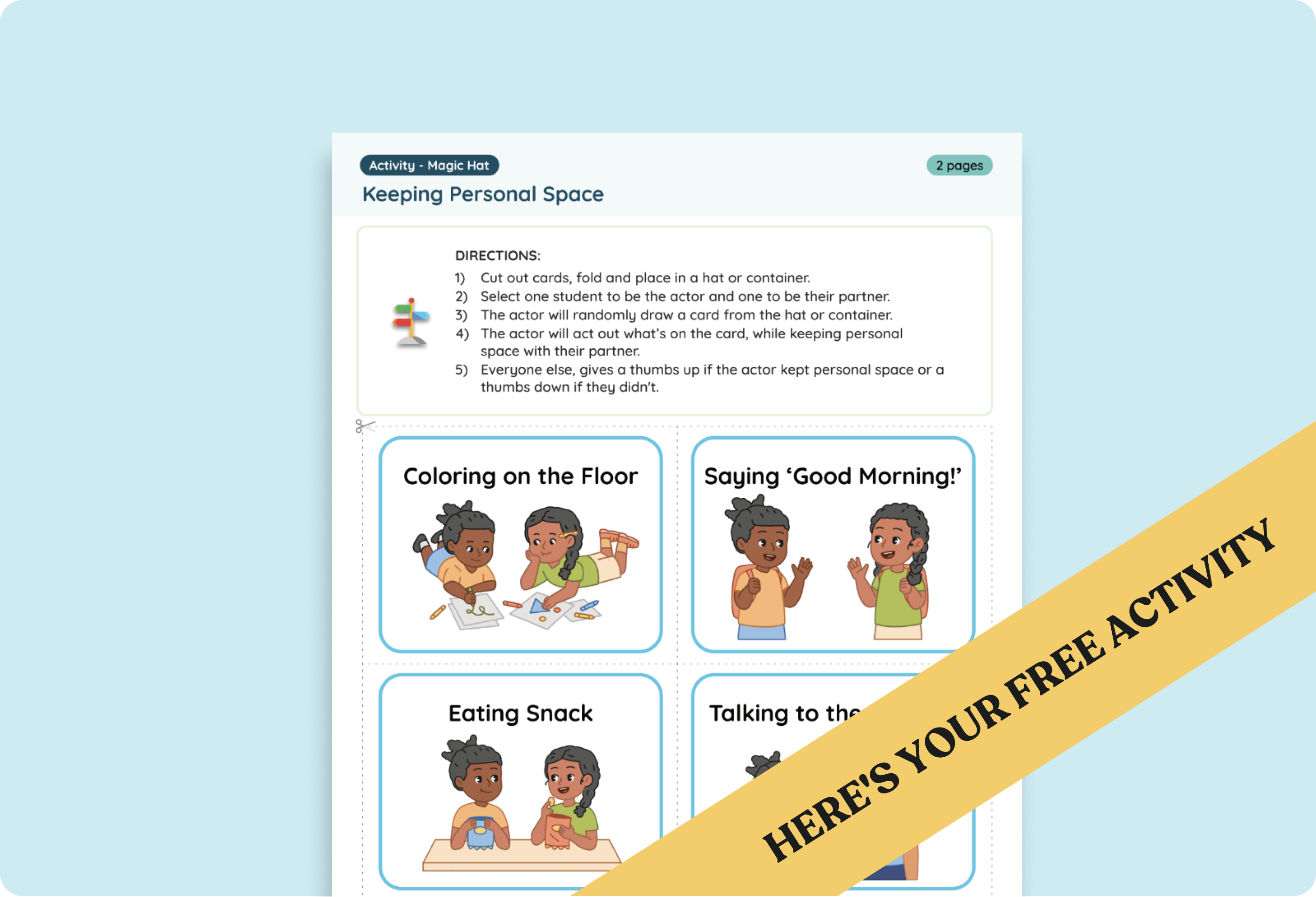
Instructional Tips:
- Begin with visuals like “invisible bubbles” using tape or floor markers to show appropriate spacing.
- Discuss how it feels when someone is too close versus at the right distance, using prompts like “What do you notice happening when we leave space between us?”
- Use hula hoops or cones for a hands-on demonstration of personal space.
- Revisit the concept during transitions such as lining up or entering the classroom with cues like “bubble time” reminders.
- Provide small-group or one-on-one practice for students who need extra support.
How to Line Up Interactive Activity
Skill Area: Classroom Routines and Transitions
Grade Band: Pre-Kindergarten & Kindergarten
This digital activity for lining up guides pre-K and kindergarten students through the steps using friendly illustrations and interactive drag-and-drop sequencing. It teaches foundational skills like waiting your turn, following step-by-step directions, and respecting space, helping students develop structure and independence in classroom routines.
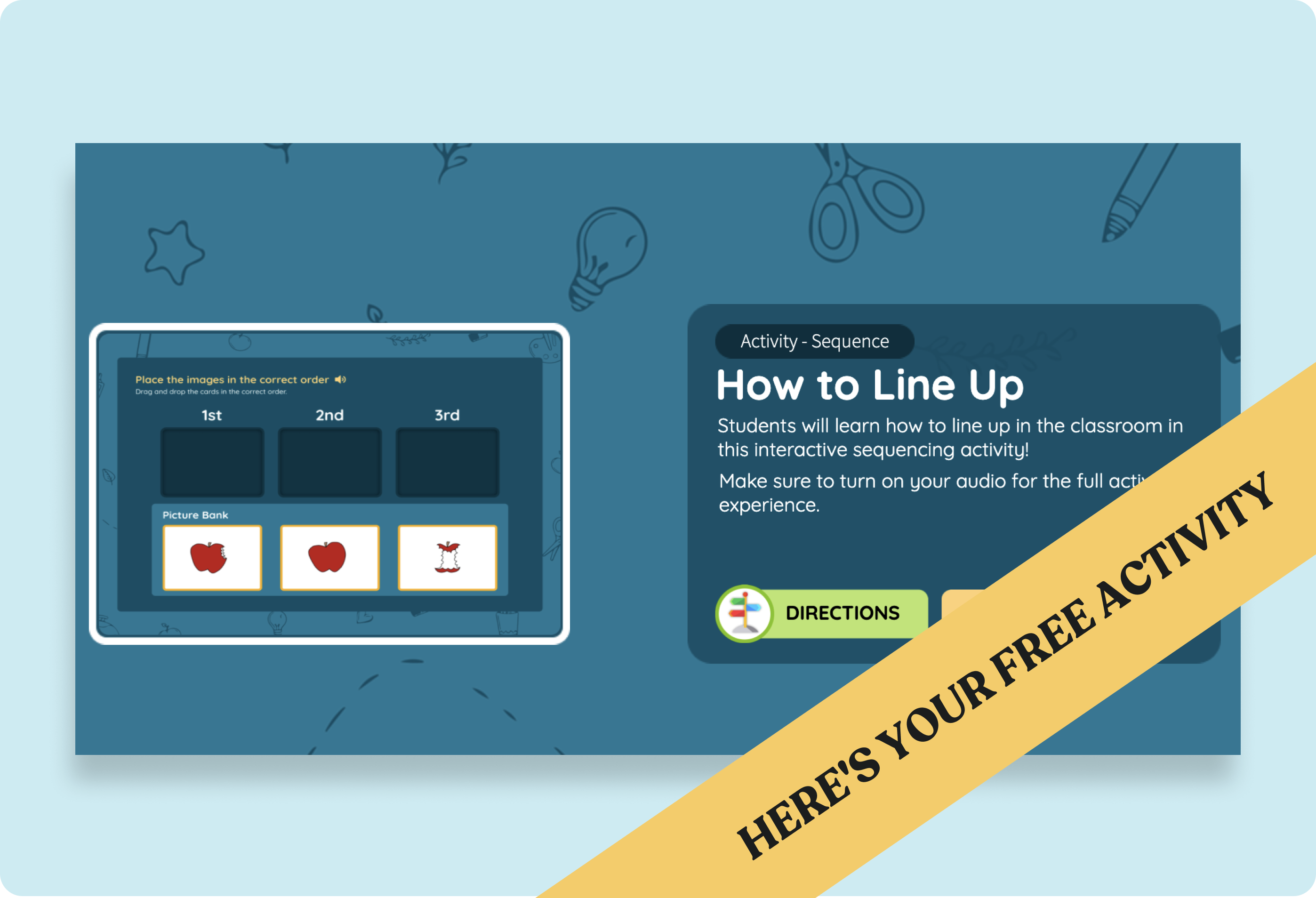
Instructional Tips:
- Start by introducing why and when lining up is needed (for example, before recess or lunch) and discuss the importance of staying orderly.
- Project the interactive tool and model the sequence, narrating your thought process (“I hear the teacher say ‘Line up please,’ that must be first”).
- Invite students to practice the activity together, asking questions like “What would happen if we line up before the signal?” to reinforce cause and effect.
- Practice the routine in real life immediately afterward, then reinforce behaviors with praise such as “Great job keeping hands to yourself.”
- Post a visual sequence chart near transition areas and use prompts like “What is our first step?” to build consistency.
Listening in School Lesson Plan
Skill Area: Listening and Following Directions
Grade Band: Pre-Kindergarten & Kindergarten
This listening and following directions lesson helps preschool and early elementary students strengthen their listening skills by teaching them how to focus on the speaker, follow directions, and respond appropriately. Through simple stories, visuals, and guided practice, students learn the building blocks of classroom listening that support both learning and positive behavior.
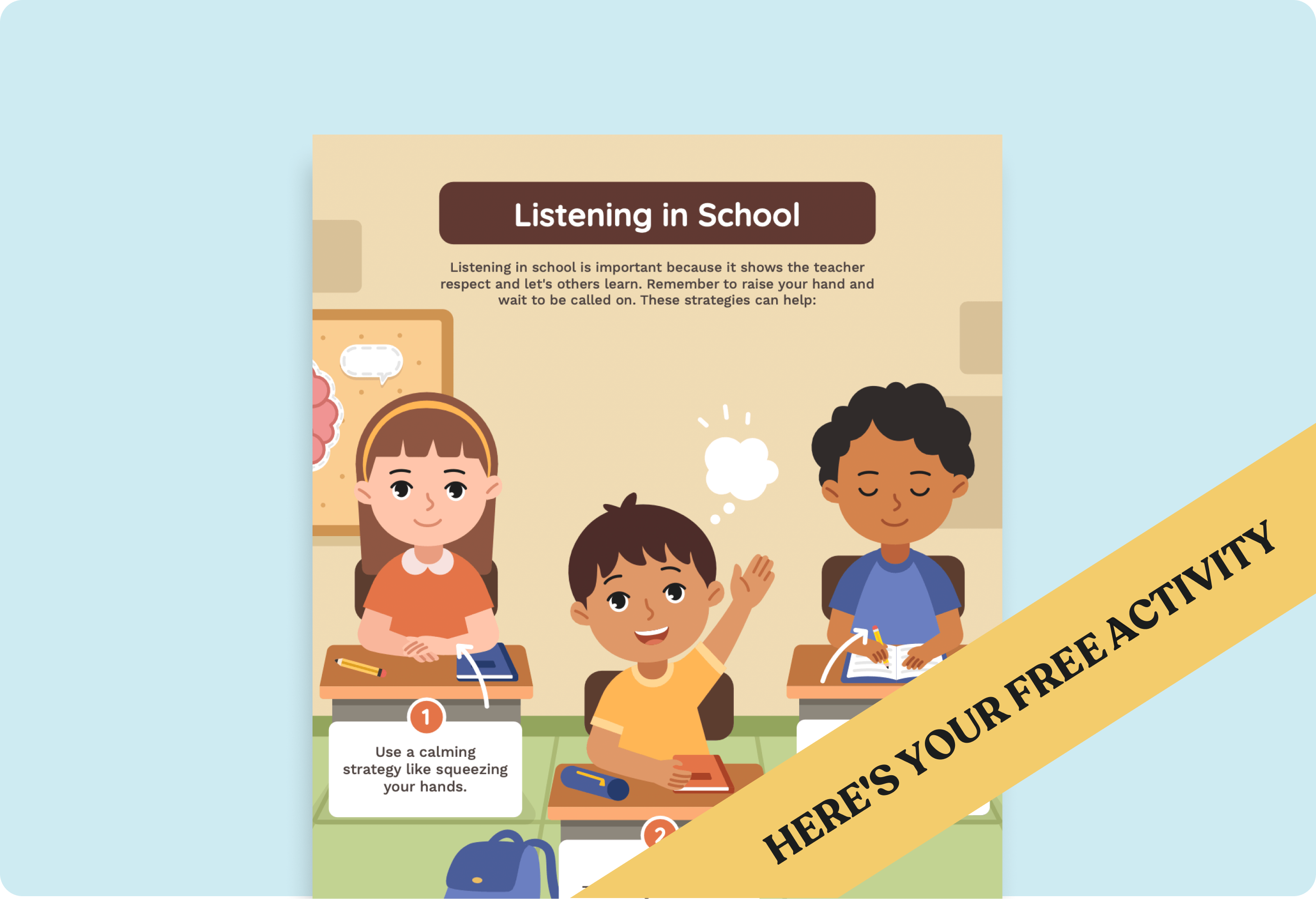
Instructional Tips:
- Begin with a short story or visual that highlights the difference between listening and not listening.
- Model active listening by exaggerating behaviors such as looking at the speaker, nodding, and repeating directions back.
- Incorporate movement by asking students to follow simple directions like “clap twice” or “touch your head.”
- Reinforce listening cues throughout the day with prompts like “Show me listening eyes” or “Let’s check if we’re ready to hear.”
- Pair students for short listening games to practice taking turns and giving feedback.
My Listening Toolbox Activity
Skill Area: Listening and Following Directions
Grade Band: Pre-Kindergarten & Kindergarten
This no-prep activity for listening skills invites preschool and kindergarten to view attentiveness as a set of “tools.” Using a colorful visual toolbox, students learn to focus their eyes, quiet their mouth, turn on their “listening ears,” still their hands and feet, and engage their brain. It sets a clear framework for understanding listening as an active skill.
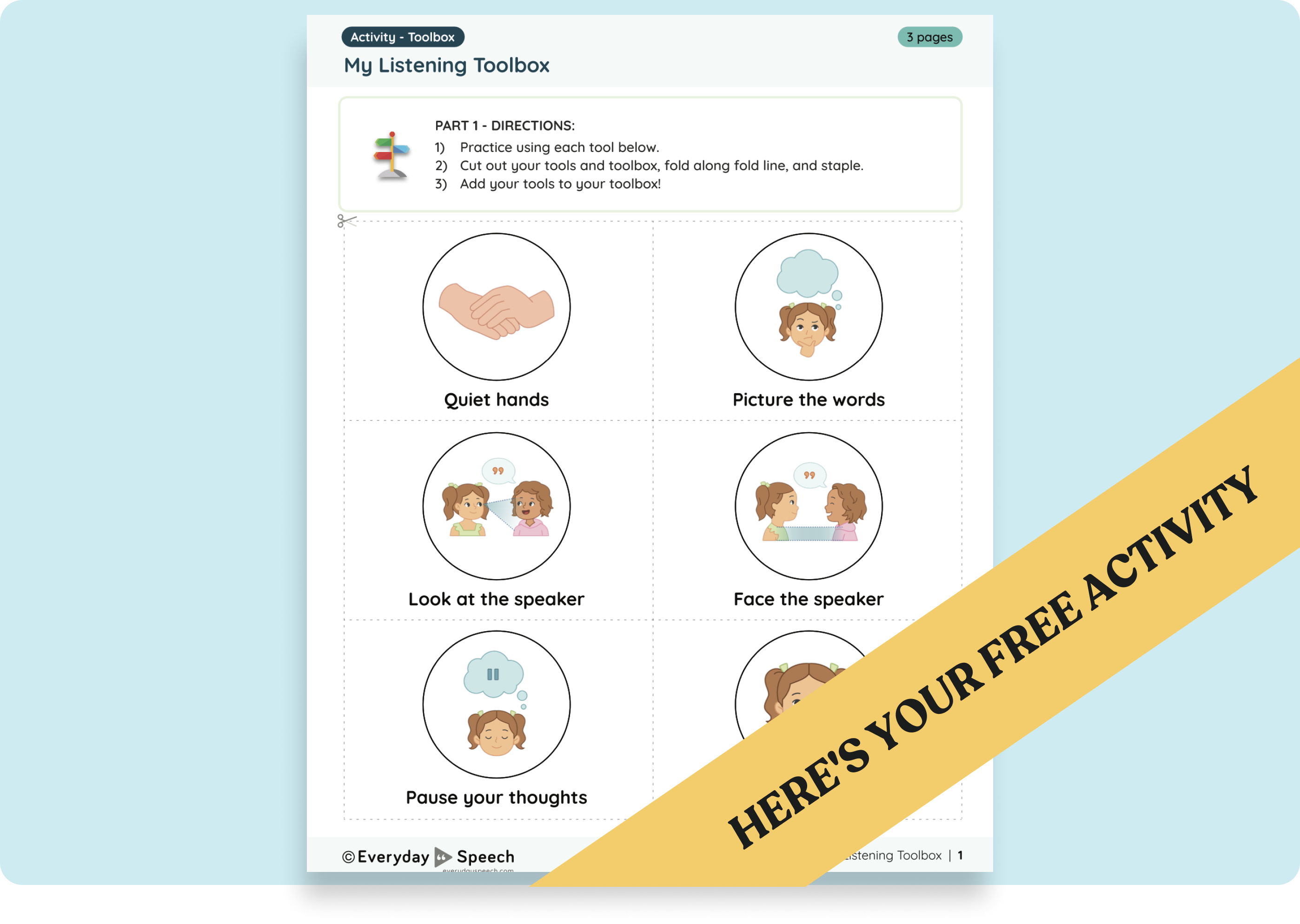
Instructional Tips:
- Begin by comparing listening tools to a builder’s toolbox, helping students understand each behavior as a tool they use to listen.
- Explain each tool from the printable and invite students to physically act out behaviors like “turn on listening ears” or “place hands in lap.”
- Use role-play scenarios (for example circle time or lining up) to show what happens when tools are used correctly or left out.
- Let students personalize their toolbox by coloring it and choosing their favorite listening tools.
- Reinforce the toolbox regularly (“Who can show me their listening ears?”) and consider a listening pledge for class routines.
Ready to Grow Activity
Skill Area: Growth Mindset and Effortful Learning
Grade Band: Pre-Kindergarten & Kindergarten
This no‑prep back-to-school craft engages Pre‑K and kindergarten students in a hands‑on activity using plant growth imagery to teach that skills and abilities can grow with effort and practice. Through a printable “seed‑to‑flower” exercise, children assemble parts of a plant to represent learning steps such as practicing, asking for help, and trying again, helping them understand that improvement is possible over time.
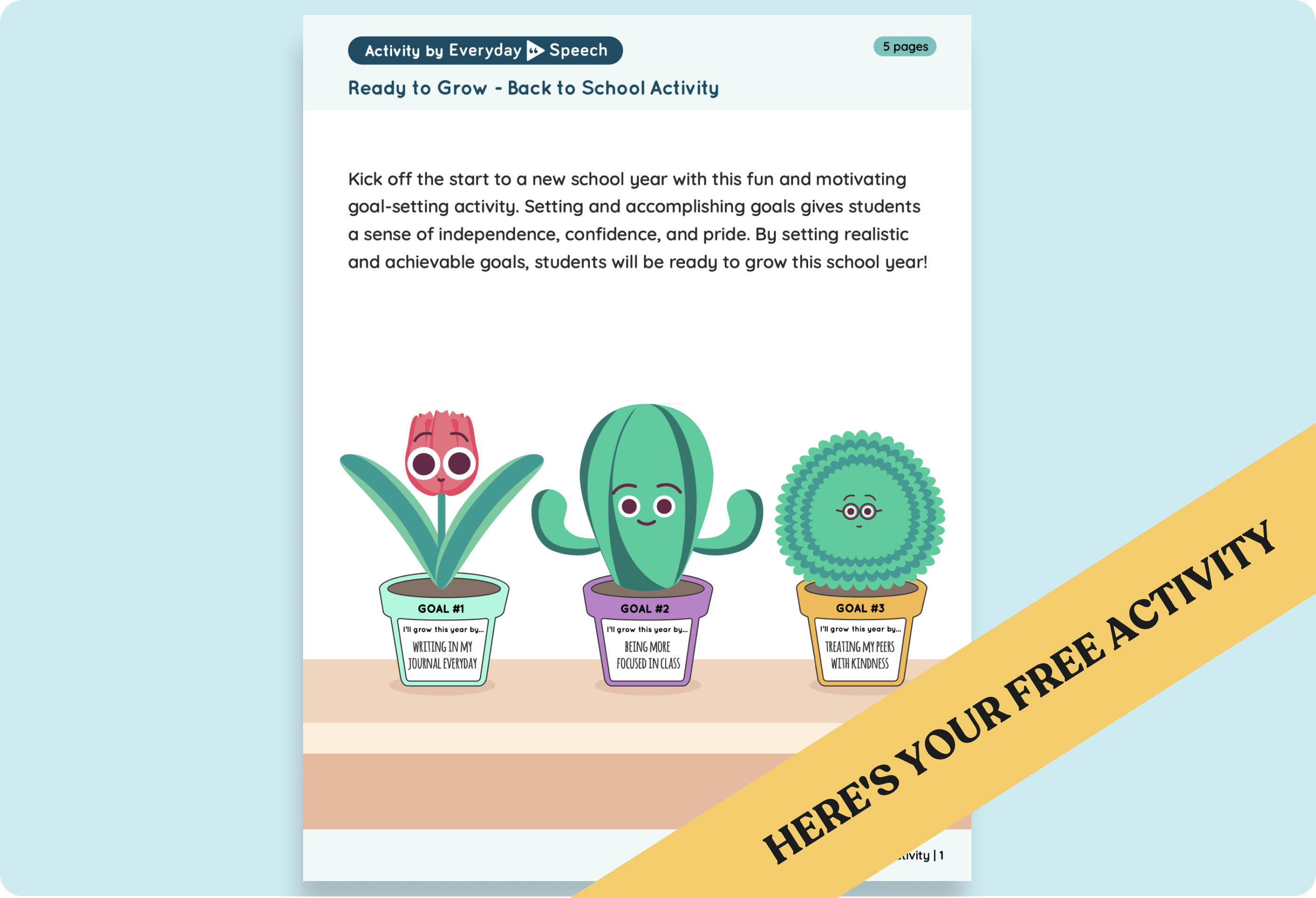
Instructional Tips:
- Begin with a discussion about what it means to grow, using examples like getting taller, learning to tie shoes, or practicing shapes.
- Guide students in assembling their plant craft, using each part to symbolize different learning behaviors: seed for trying, roots for asking for help, stem and leaves for practicing, flower for achieving a goal.
- Encourage students to personalize their plant by drawing themselves as a flower or writing a goal on a leaf or petal.
- Facilitate a class discussion where each student shares something they want to get better at and how they plan to practice it.
- Extend the lesson by displaying plants in a “growth garden” on the bulletin board and reinforcing phrases like “I can try again” during daily routines.
Transitioning Activities Interactive Tool
Skill Area: Classroom Routines and Transitions
Grade Band: Pre-Kindergarten & Kindergarten
This no-prep, interactive digital tool for transitions guides pre-K and kindergarten students through the order of daily routines using visual sequencing and an engaging character named Taylor the Tulip. It builds confidence in following multiple steps and supports smoother shifts between activities.
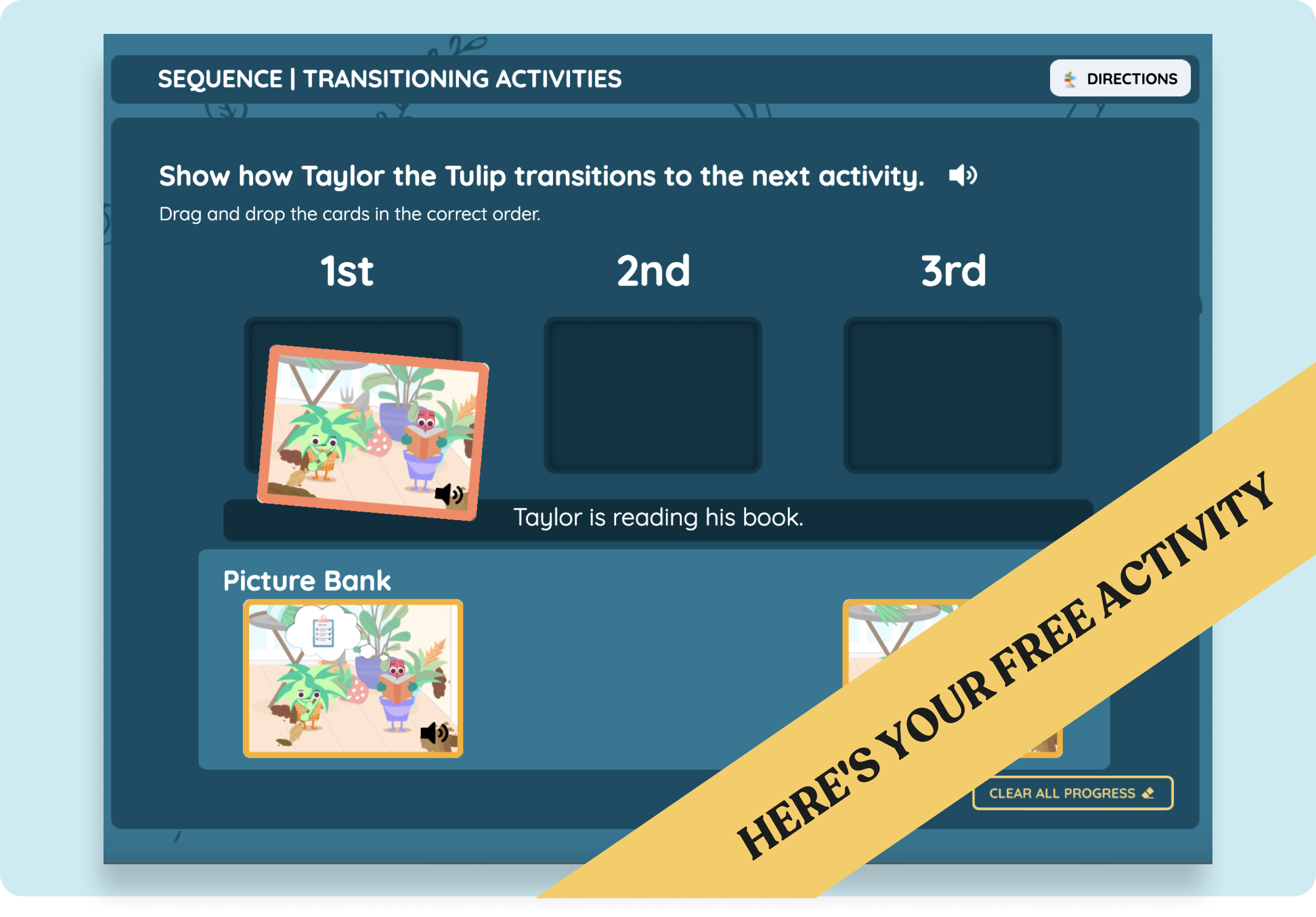
Instructional Tips:
- Introduce the concept of transitions by talking through what a transition is (for example, moving from playtime to cleanup).
- Project the interactive tool on a screen or interactive board and walk students through it, pointing out verbal and visual cues.
- Ask students to help sequence the cards—why should one task come before another, and how would skipping a step feel?
- Practice a real-life transition right after using the tool, narrating each step (for example, “First we put our papers in the bin, next we push in chairs, last we line up”).
- Extend the lesson by posting visual schedules, using consistent language during transitions, and sending simple visuals home to reinforce routines.
Back to School: Conversation Starter Activity
Skill Area: Conversation Skills for Connection and Inclusion
Grade Band: Elementary School
This no‑prep activity for conversation skills guides elementary students through prompts, and students practice making eye contact, taking turns, listening actively, and respectfully responding to peers. It’s a friendly way to help students feel comfortable with classmates and start building a positive classroom community.
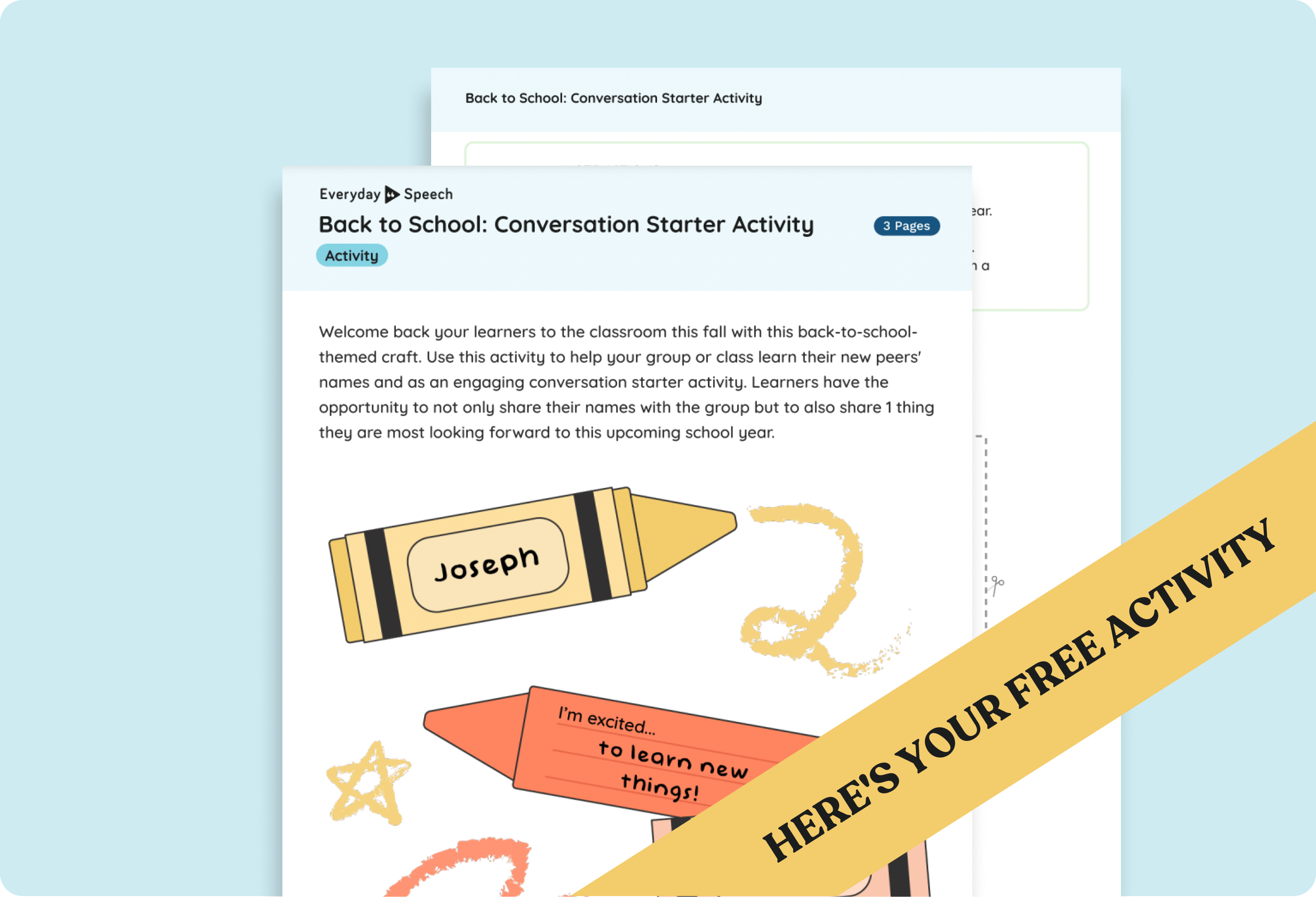
Instructional Tips:
- Begin by setting expectations. Talk about the importance of listening, waiting your turn, and using friendly voices. Creating anchor charts with these cues helps with consistency.
- Model a conversation using one of the prompt cards. Make deliberate mistakes (for example, interrupting or avoiding eye contact) and ask students to identify what could be done differently.
- Organize students into pairs or small groups. Use roles like Speaker, Listener, and Observer to structure participation and reinforce turn‑taking.
- Circulate and offer feedback as students practice. Use sentence starters or visual supports for learners who need extra help keeping the conversation going.
- End with reflection: ask students which prompts were most fun or helped them learn about classmates. Display the prompts in a “conversation corner” to reinforce practice.
Following Directions Classroom Poster
Skill Area: Listening and Following Directions
Grade Band: Elementary School
This no-prep activity for following directions uses a visual poster featuring five simple steps to help elementary students master the process. It teaches them to notice when directions are being given, focus on key words, repeat the directions mentally, determine the first step, and check their work before moving on.
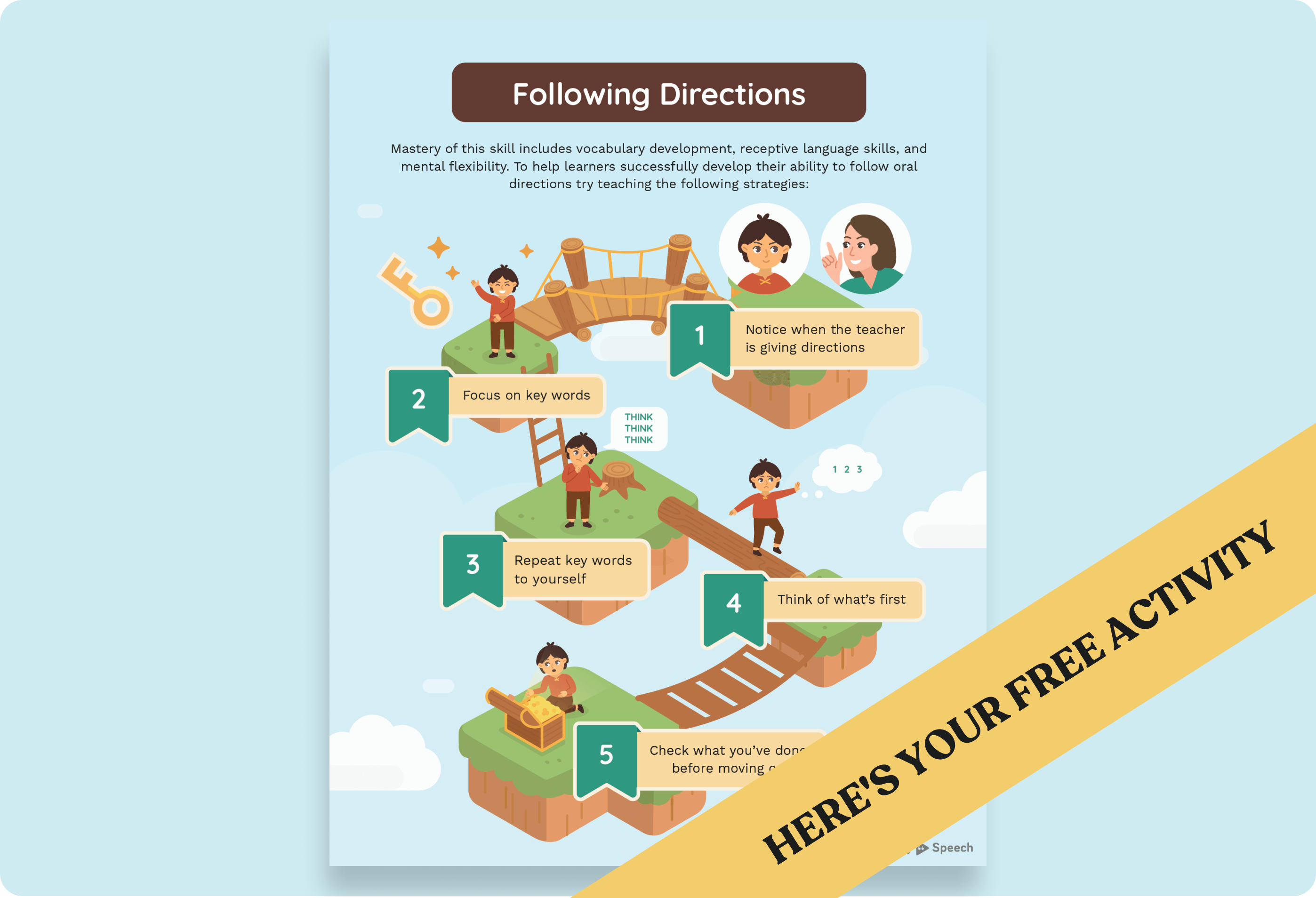
Instructional Tips:
- Begin with a fun “Simon Says” style game using multi-step directions to spark engagement and demonstrate how easily steps can be missed.
- Display the poster and walk students through each step (“Notice when directions are given,” “Focus on key words,” etc.), modeling how to apply them.
- Use group scenarios where students follow the poster’s steps to complete tasks, then discuss how each step helped.
- Hang the poster in a visible part of the classroom as a reference. Reinforce it when giving instructions by asking, for example, “What step are we on now?”
- Encourage students to use the steps independently during daily routines like lining up, cleaning up, or transitioning between subjects.
How to Respect Others’ Opinions Activity
Skill Area: Respecting Others & Peer Interaction
Grade Band: Elementary School
This no-prep worksheet on respecting others’ opinions guides elementary students through identifying respectful and disrespectful ways to respond when opinions differ. It encourages thoughtful listening and polite dialogue, helping students understand how to disagree without being unkind or dismissive.
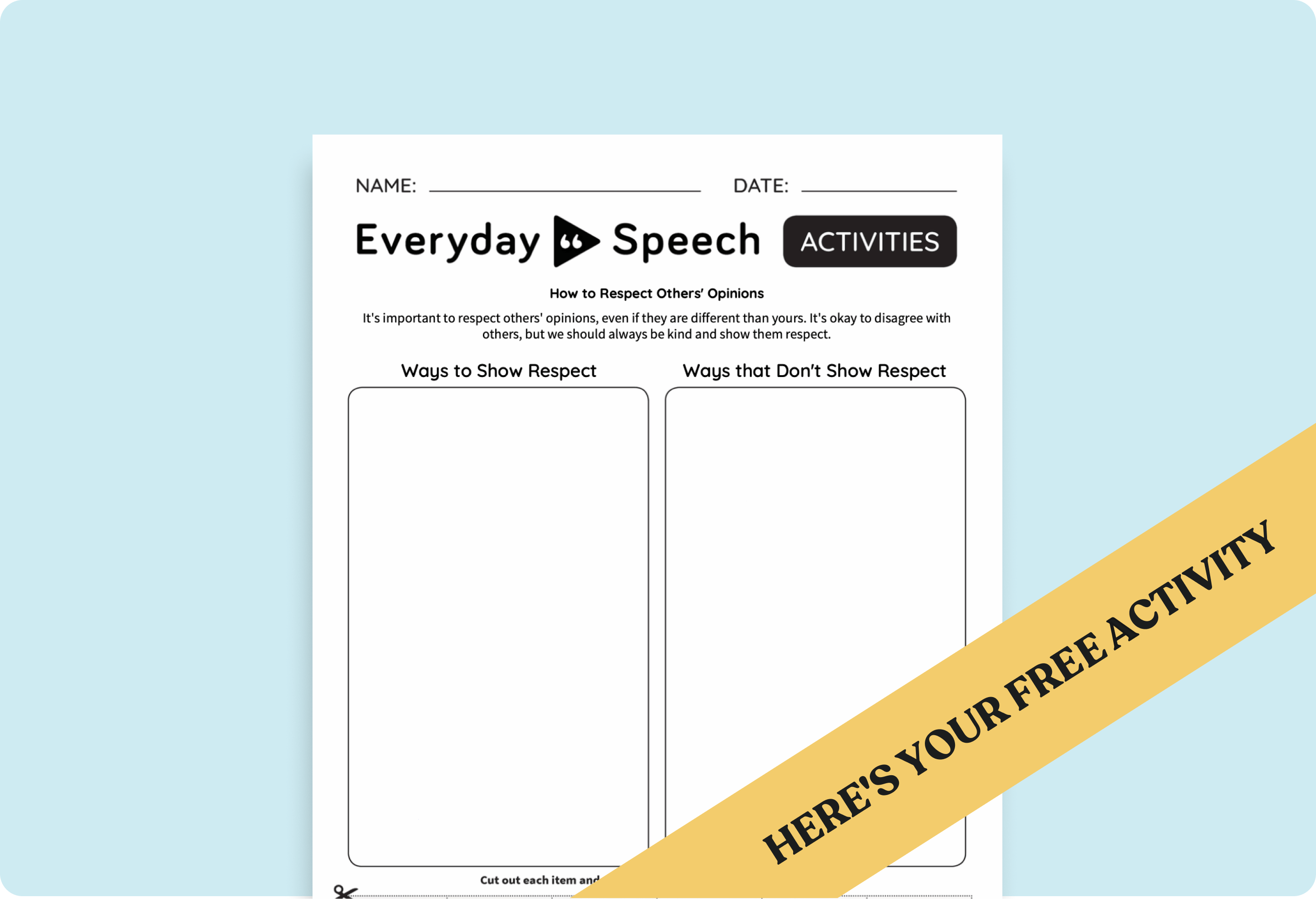
Instructional Tips:
- Start with a class discussion about what respect means and why it matters, even when we disagree with someone’s opinion.
- Walk through the worksheet together, having students identify whether each response is respectful or not and explaining why.
- Use thumbs-up/thumbs-down voting in pairs or groups to build engagement and ease discussions.
- Ask students to suggest better ways to respond in scenarios that show disagreement, modeling respectful language like “I see it differently, but I understand your point.”
- Extend the lesson afterward by reinforcing respectful conversation during group work or class discussions and recognizing kind responses when they happen.
How to Transition from Speech Worksheet
Skill Area: Classroom Routines and Transitions
Grade Band: Elementary School
This printable worksheet walks elementary students through the steps needed to transition smoothly from speech sessions back to their classroom. It covers recognizing when speech time is ending, gathering materials, saying goodbye, returning quietly, and settling back into class routines. The activity promotes independence and makes daily transitions easier for both students and teachers.
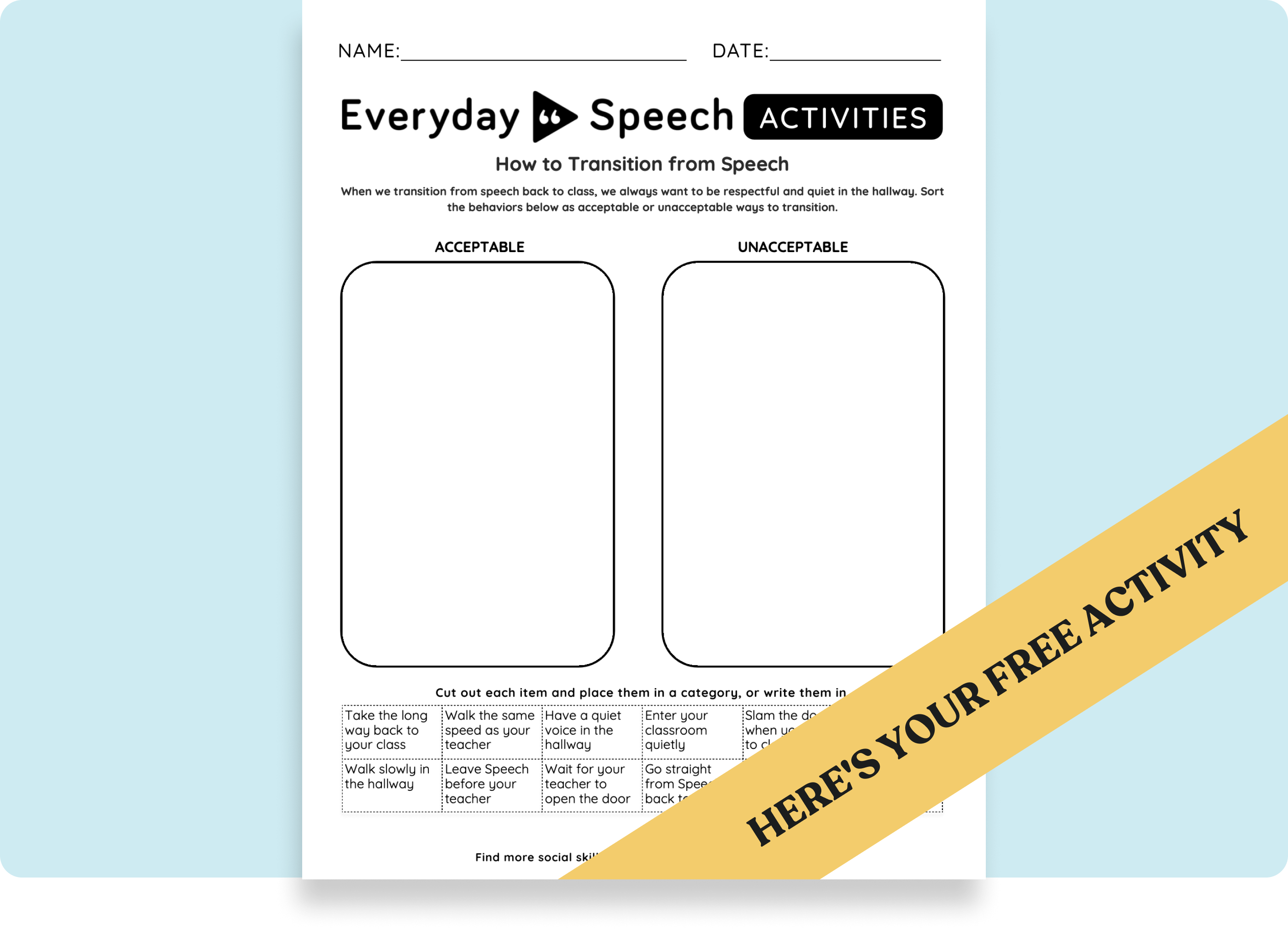
Instructional Tips:
- Start by discussing why returning to class matters and establish that each part of the day has its own start, finish, and steps in between.
- Preview the worksheet steps with students, talking through each part: noticing speech is ending, packing up, saying goodbye, walking calmly, checking in with the teacher, and returning to tasks.
- Model each stage of the transition using simple, concrete language, then have students practice through role play.
- Customize the lesson with visuals, checklists, or personal routes from speech to class to support learners who need extra structure.
- Use the worksheet as a real-life checklist during an actual transition, then reflect afterward on how smoothly it went and where more practice might help.
Showing Respect Goal Poster
Skill Area: Respecting Others and Classroom Culture
Grade Band: Elementary School
This no-prep respectfulness poster presents clear, age-appropriate examples of respectful behaviors for elementary students. It breaks the abstract concept of respect into concrete actions like listening to others, using polite language, waiting turns, following directions, and handling disagreements calmly.
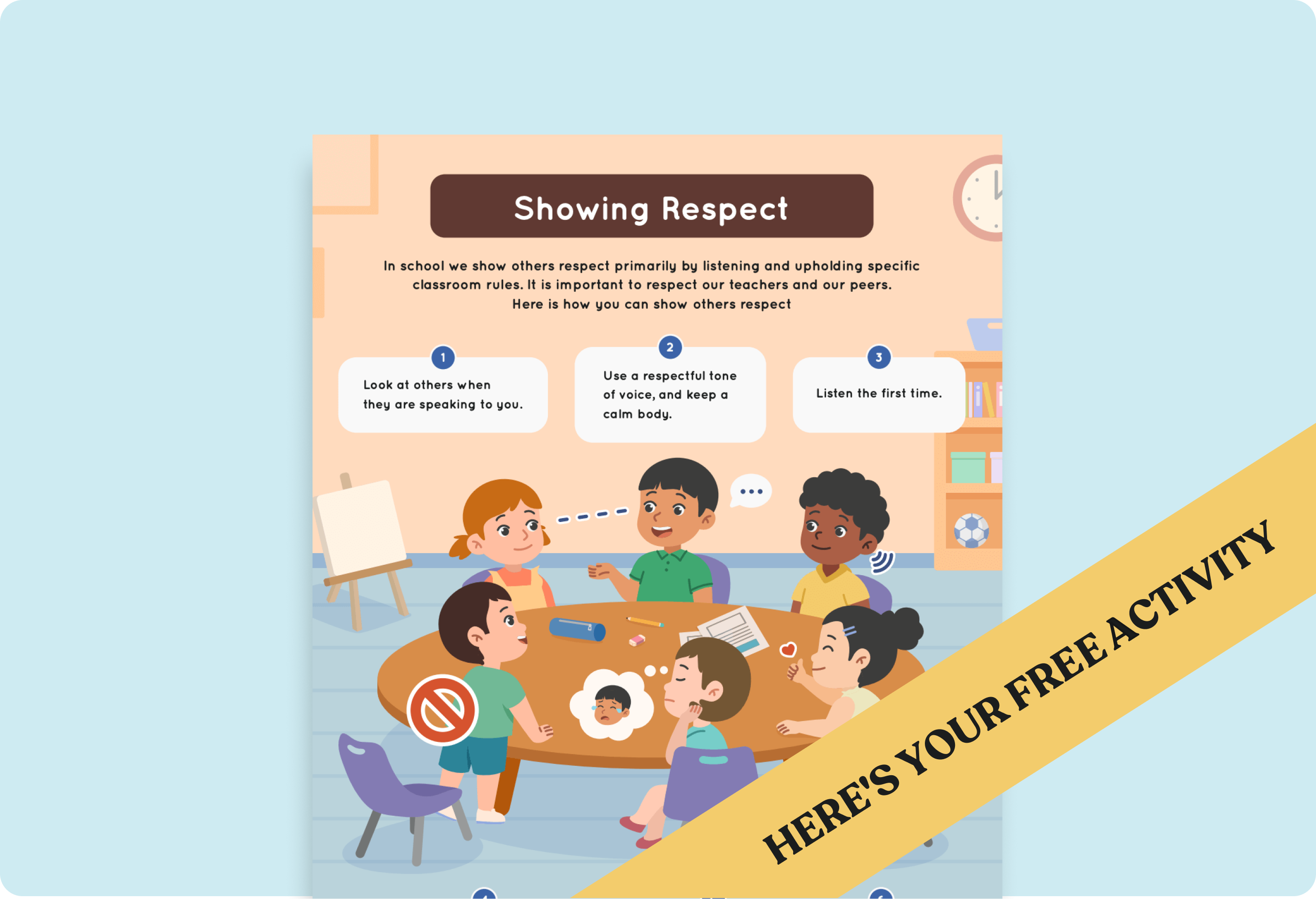
Instructional Tips:
- Start with a discussion about what respect means and invite students to share examples from school or home.
- Display the poster and walk through each behavior, asking students to provide real-life examples for each item.
- Role-play common scenarios (like disagreements or lining up) and ask students to point out which respectful behaviors they see.
- Encourage students to set personal or group respect goals using behaviors from the poster—follow up with quick daily check-ins.
- Keep the poster visible and use it during class routines; reinforce respectful actions by referencing specific behaviors (“I noticed you waited patiently, that shows respect”).
Going to Middle School Interactive Activity
Skill Area: Easing Transitions and Building Confidence
Grade Band: Middle School
This no-prep, interactive lesson for middle school readiness guides upper elementary students through the process of preparing for middle school. Through real-life scenarios, students explore changes like navigating lockers, finding classes, and stepping into a larger school community—breaking down fears and building confidence before the big transition.
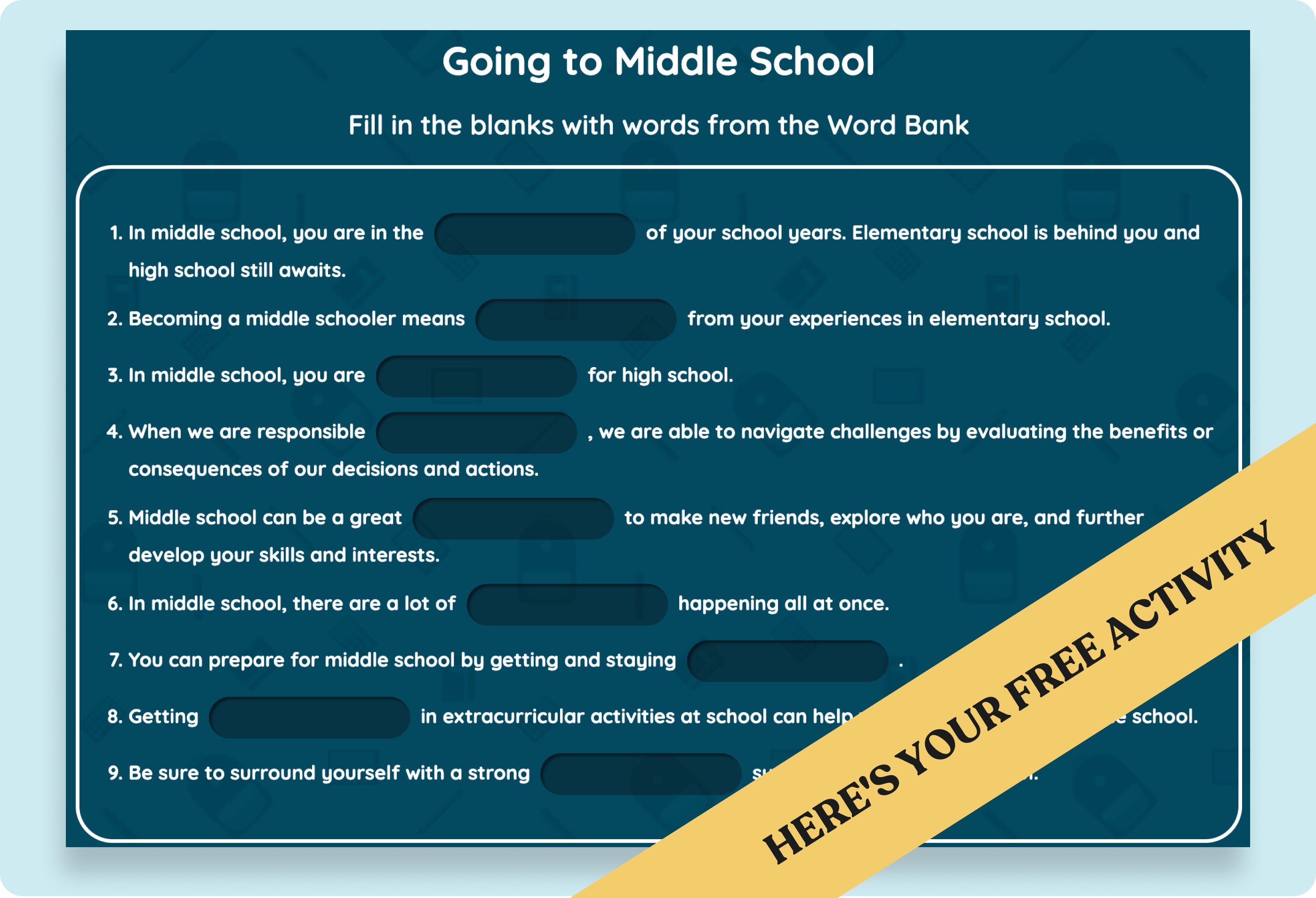
Instructional Tips:
- Start with a discussion about middle school—ask students to share things they’re curious or nervous about.
- Project the interactive activity and walk through scenarios together, inviting volunteers to help make decisions or point out clues.
- Facilitate small-group role plays afterward, giving students scenarios like “What would you do if…” to spark conversation and problem solving.
- Create a “transition toolkit” with visuals, checklists, or short reflection sheets for students to use before the move and again during the first week of middle school.
- Follow up by pairing incoming middle schoolers with an older student or buddy system for extra guidance and reassurance during the changeover.
How to Disagree with a Friend Activity
Skill Area: Peer Interaction and Emotional Coping
Grade Band: Middle School
This no-prep worksheet for handling disagreements guides middle school students through identifying respectful and thoughtful ways to handle disagreements with friends. It emphasizes listening, validating different viewpoints, using calm language, and finding fair compromises. The activity helps students practice navigating conflicts while maintaining healthy relationships.
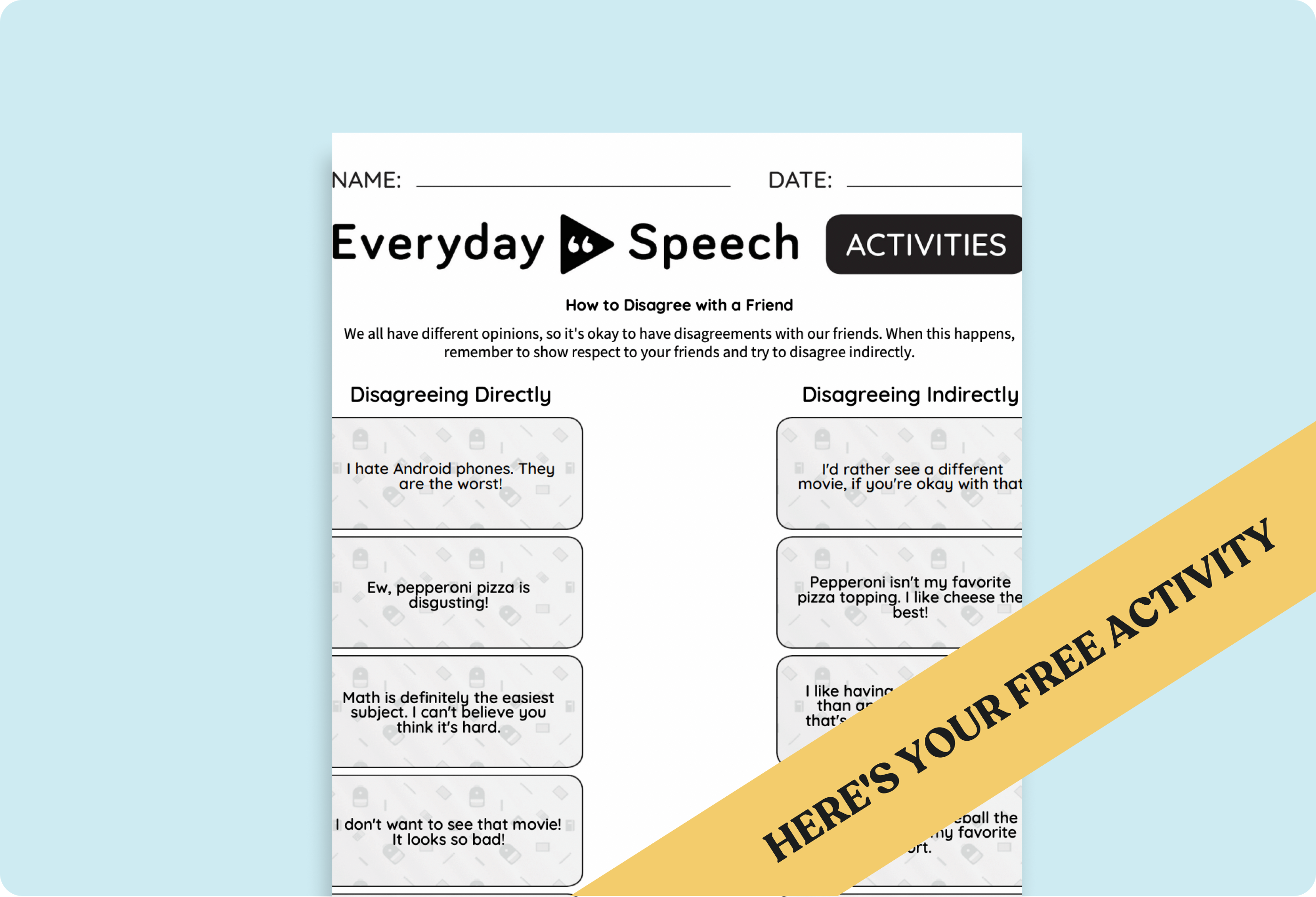
Instructional Tips:
- Introduce the topic by discussing real-life situations where friends might disagree (choosing a game, planning after-school activities, group projects).
- Have students work through worksheet scenarios in small groups, deciding whether the responses are respectful or not and explaining their reasoning.
- Encourage students to propose better responses using phrases like “I see your point, but I feel…” or “That’s a good idea, but how about we try…?”
- Role-play a few scenarios in front of the class by asking for student volunteers to model respectful disagreement.
- Follow up by recognizing positive peer interactions during the week and inviting students to reflect on what worked when differences arise.
Middle School Respect Lesson Plan
Skill Area: Respecting Others and Classroom Culture
Grade Band: Middle School
This no-prep lesson plan on respect helps middle school students explore what respect looks like in school settings. Through discussion prompts, real world scenarios, and reflective questions, students define respectful behaviors, recognize the impact of respect in their daily routines, and consider how to show respect consistently in school communities.
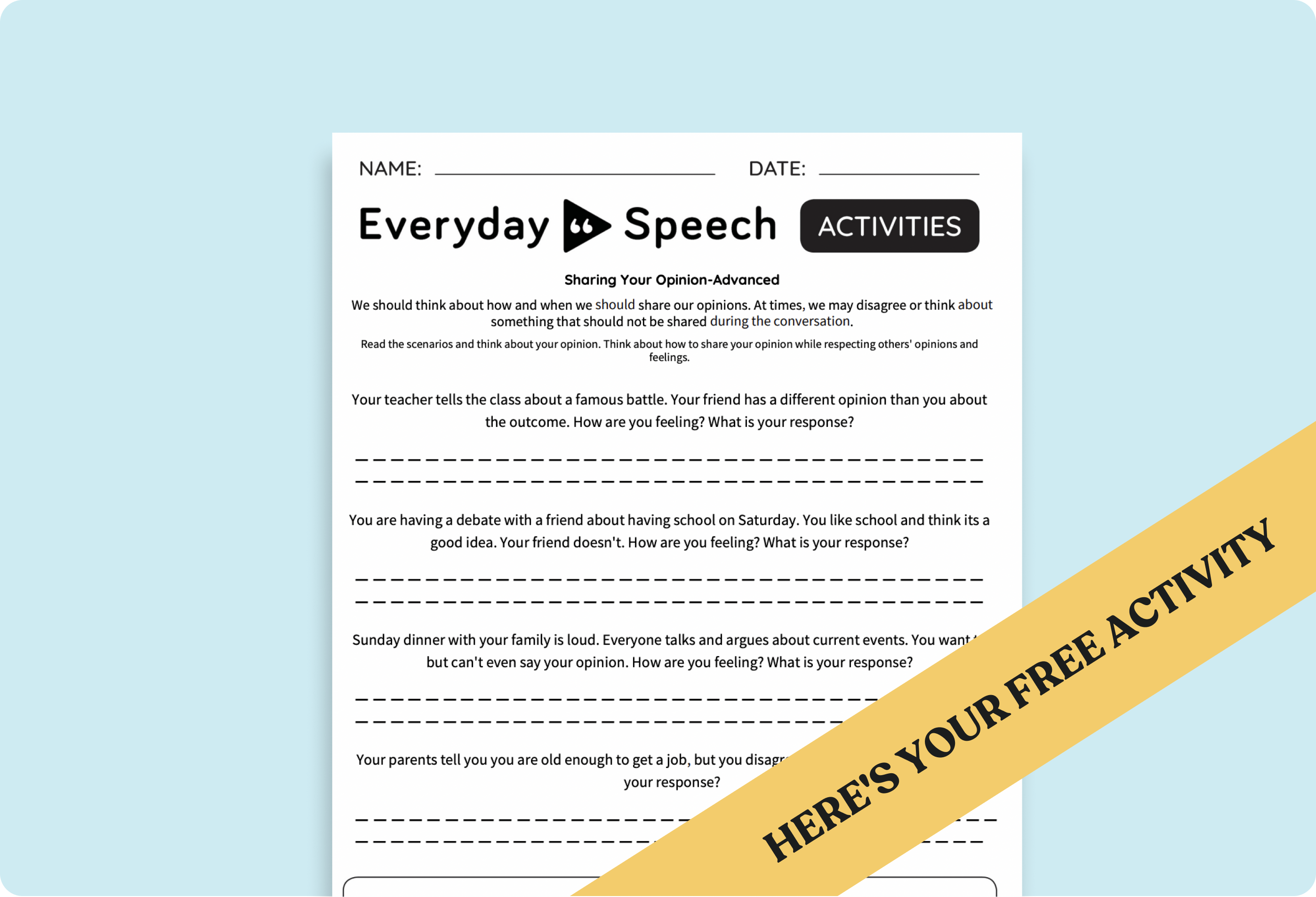
Instructional Tips:
- Begin with a class discussion on what respect means and why it matters, inviting students to share personal examples.
- Present relevant scenarios such as disagreements, group work, or using shared spaces and ask students to discuss respectful reactions versus disrespectful ones.
- Have students work in small groups to create skits or posters that represent respectful behavior in various school situations.
- Use reflection prompts like “How does it feel when respect is shown?” or “What happens when respect is missing?” to deepen understanding.
- Reinforce respect daily by acknowledging respectful choices you observe and inviting students to set personal respect goals for themselves or the class.
How to Use These Activities in the Classroom
These activities are designed to be flexible so teachers and specialists can use them in the ways that best fit their students. While they are especially powerful during the first weeks of school, they can also be revisited throughout the year to refresh routines and expectations.
Here are a few ways to get the most out of them:
- Use them during the first weeks of school: Introduce activities early so students practice listening, respect, and transitions right from the start.
- Repeat them as refreshers: Bring the same lessons back after long weekends, holiday breaks, or anytime routines begin to slip.
- Adapt for different age groups: Many of these activities work for preschool through middle school. Younger students may need more visuals and repetition, while older students can benefit from discussions and role-plays.
- Pair them with classroom routines: Integrate the activities into existing structures like morning meetings, small group time, or transitions between subjects.
By weaving these activities into the rhythm of the classroom, teachers make behavior skills a natural and ongoing part of the learning environment.
Bringing It All Together
Starting the year with clear expectations for listening, respect, and transitions helps create a classroom where students feel safe, supported, and ready to learn. These skills may seem simple, but they shape how students interact with teachers and peers, how smoothly lessons run, and how much time is available for learning.
The activities in this collection are designed to make teaching behavior skills practical and engaging. Use them during the first weeks of school to set the tone, then return to them throughout the year whenever routines need a reset.
By investing time in listening, respect, and transitions early, teachers can build strong classroom habits that last all year long.
